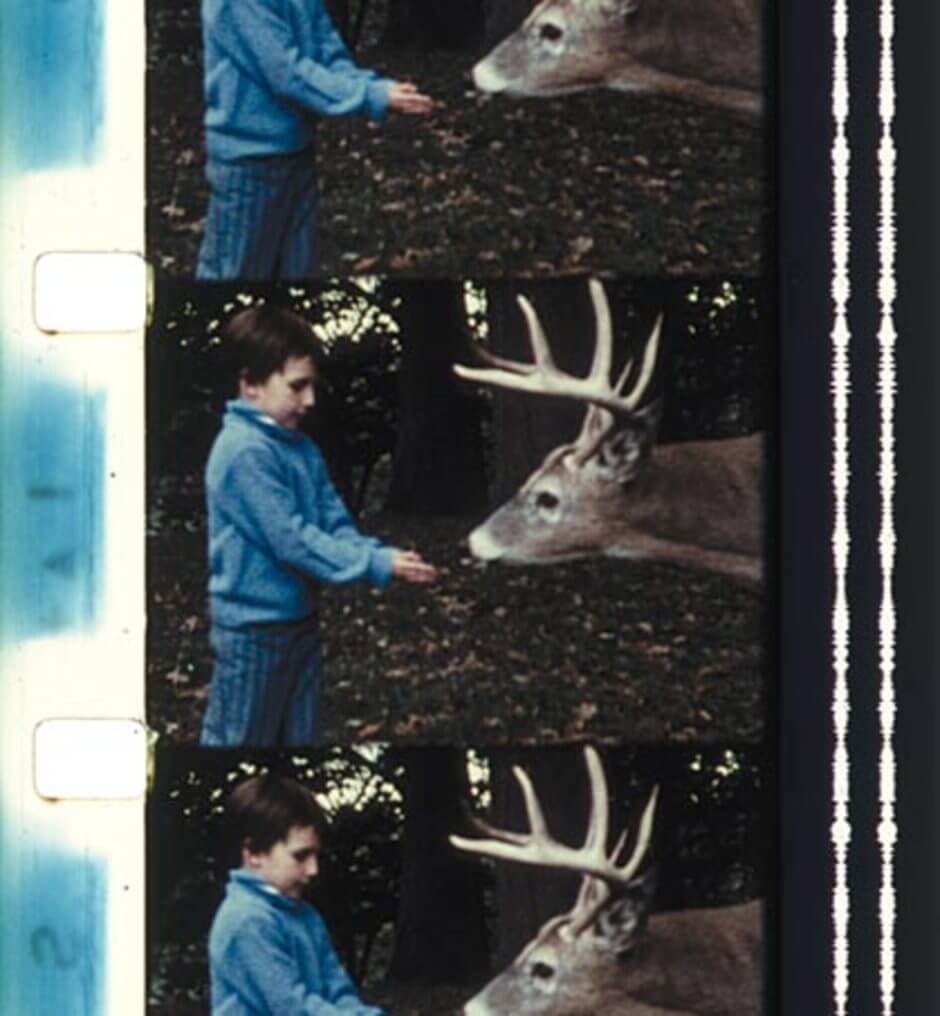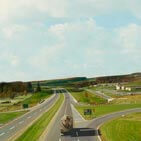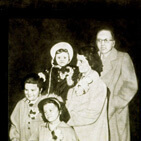The Hart of London 1968–70

Jack Chambers, The Hart of London, 1968–70
16mm black and white and colour film, sound, 79 min.
Art Gallery of Ontario, Toronto
Chambers’s films provided the temporal dimension that he could never fully achieve in painting. Olga and Mary Visiting, 1964–65, and his silver paintings of 1966–67 could only point in this direction. While film inevitably moves ahead in our “real” time of viewing, Chambers is never content with a simple, linear narrative. The Hart of London, his longest and most ambitious completed film, plays with time in myriad ways.
For the chase and eventual capture of the deer that gives the film its punning title, he employed found news footage from 1954, liberally borrowed from the archives of CFPL-TV in London. He also deploys film he shot in Spain for the pivotal abattoir scene. In London he shot footage for the delicate sequence near the conclusion in which his sons feed domesticated deer while their mother, Olga, whispers, “You have to be very careful”; and for the transcendent closing sequences of water and sky. Olga’s voice-over is not only poignant, given the fragility of the young children and the deer, but also surprising, as most of the sound in The Hart of London refuses to advance or even connect with the narrative.
Hart is an endlessly layered tour de force. It explores life and death, the sense of place and personal displacement, and the intricate aesthetics of representation. It is a personal and spiritual film, marked inevitably by Chambers’s knowledge that he had leukemia. The late American avant-garde filmmaker Stan Brakhage said of Hart, “If I named the five greatest films [ever made], this has got to be one of them.” Even this high praise falls short of hyperbole. The Hart of London is at the centre of Chambers’s extraordinary achievement.

 About the Author
About the Author
 More Online Art Books
More Online Art Books
 Acknowledgements
Acknowledgements